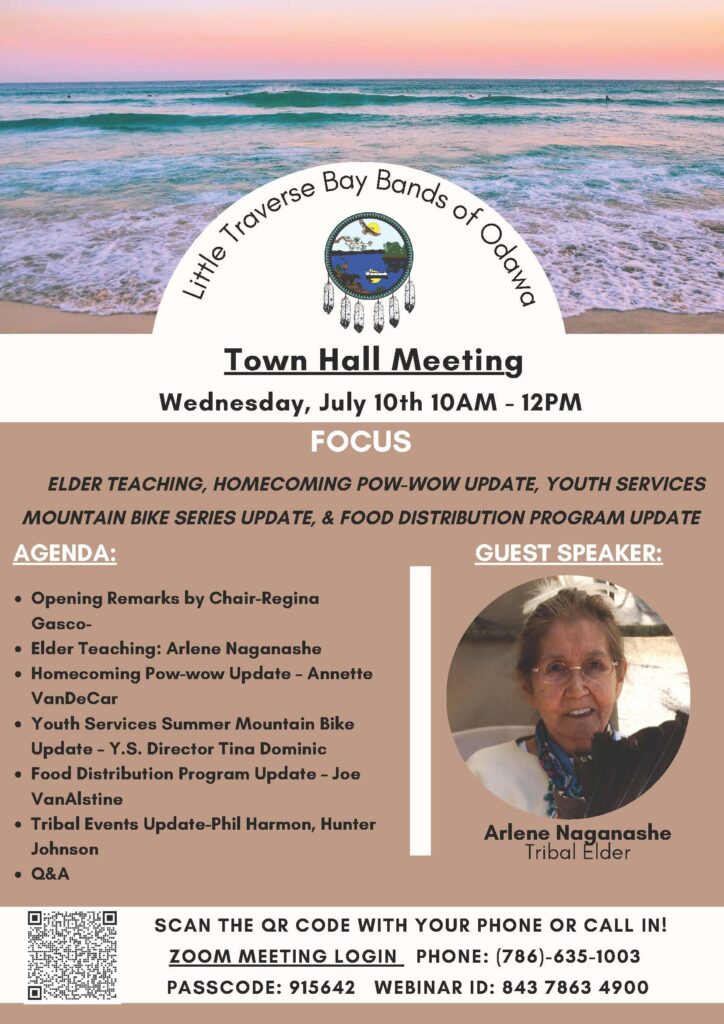General Election: June 28, 2021 Candidates for Tribal Council
RICKY COMPO
TAMARA KIOGIMA
LEROY SHOMIN
DOUG EMERY
WILLIAM ORTIZ
MARCI REYES
KENNETH DEWEY
AARON OTTO
SHARON SIERZPUTOWSKI
SIERRA BODA (WITHDREW 5-14-21)
The LTBB Water Quality Protection Program (WQPP) was established in 1999. Activities implemented within the program are to ensure the sustainment, protection, and/or prevention of the degradation of LTBB waters and wetlands. The WQPP is funded through the Environmental Protection Agency’s (EPA) 106 Clean Water Act. Proposals must be submitted every other year and approved by EPA to secure these funds to run the program. There are three main objectives within the SWQPP: continue monitoring Tribal waters and wetlands, education and outreach, and local, state, tribal and/or national representation of LTBB on workgroups or in meetings pertaining to surface water.
LTBB staff monitor a total of 19 river and stream sampling stations and 17 sites on lakes/reservoirs/ponds. The wetlands program is currently being evaluated, but currently 7 wetlands are monitored every two years. Lake samples are taken at several depths and locations, depending on lake characteristics (e.g., deep or shallow, single or multiple basins, stratification regime). River and stream samples are collected at the origin and mouth, with mid-point collection sites along rivers. Macroinvertebrates are collected in rivers, streams, creeks, and littoral zones in lakes. The Northwest Michigan Community Health Agency conducts E. Coli bacteria sampling on some lakes. Macroinvertebrate surveys are conducted in the spring, and qualitative habitat assessments, FQAs, photo monitoring, substrate characteristics, and other observations are collected throughout the years.
Above: Caroline Keson (left) and Noah Jansen (right) survey a valley of ostrich fern at Ziibimijwang. WQPP completed 12 wetland assessments from 2014-2017.
The results from chemical and nutrient analysis of water samples can be found on EPA’s STORET website, a repository and framework for sharing water monitoring data. To find chemical and nutrient data collected by the SWQPP program, follow these steps:
The data stored on STORET is not all-inclusive: more data, trend analyses, and current water quality assessment reports can be requested by contacting the WQPP directly.
Above: Lauren Dey hauls up an Eckman bottom sampler, for a macroinvertebrate survey on Spirit/Wycamp Lake in 2016.
In 2010, LTBB water qualify staff completed a baseline assessment of water quality for some of the major water bodies on and adjacent to the reservation using tribal data collected since 2000 and Michigan DEQ assessment information. Wetland data used in the assessment was available beginning in 2004. Tribal staff also conducted four types of biological assessments, which provide a more comprehensive analysis of the effects of multiple chemical and physical stressors – i.e., the parameters typically monitored by water resource professionals. These assessments include:
The results of this assessment were used to reevaluate the structure of the monitoring design and all other components within the program.
The WQPP knows the importance of providing education and outreach on water quality and linking it to the Odawa culture. This is the reason why the WQPP offers education and outreach to the local and Tribal communities. We have and are willing to collaborate with other LTBB Departments, local organizations, and/or units of government that share the same goals. Some of our recent educational collaborations include partners such as the LTBB Education Department, Experience Lake Charlevoix, and Raven Hill Discovery Center. We also provide learning opportunities to the Youth Conservation Corps and summer interns. Youth programs are of high priority in order to increase interest in the environmental and natural resource fields for the future. However, we are available for education and outreach programs for any age group and can tailor the experience as needed.
RICKY COMPO
TAMARA KIOGIMA
LEROY SHOMIN
DOUG EMERY
WILLIAM ORTIZ
MARCI REYES
KENNETH DEWEY
AARON OTTO
SHARON SIERZPUTOWSKI
SIERRA BODA (WITHDREW 5-14-21)
BERNADECE (BERNIE) BODA & LINDA GOKEE
REGINA GASCO-BENTLEY & STELLA KAY
(Click Team To Read Their Statements)
BERNADECE (BERNIE) BODA & LINDA GOKEE
REGINA GASCO-BENTLEY & STELLA KAY
(Click Candidate Name To View Their Statement)
Search Code Index
function search(string){ window.find(string); }
LTBB Events
Sun Mon Tue Wed Thu Fri Sat 

Contact SPRING
[ninja_form id=12]
https://app.hellosign.com/s/LJki90VA